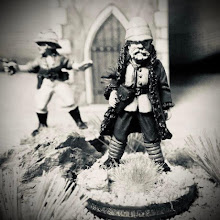The 7.5 cm Pak 40 (7,5 cm Panzerabwehrkanone 40) was a German 75 millimetre anti-tank gun developed in 1939-1941 by Rheinmetall and used during the Second World War. The Pak 40 formed the backbone of German anti-tank guns for the latter part of World War II, mostly in towed form, but also on a number of tank destroyers such as the Marder series. Approximately 20,000 Pak 40s were produced.
The Pak 40 was the standard German anti-tank gun until the end of the war, and was supplied by Germany to its allies. Some captured guns were used by the Red Army. After the war, the Pak 40 remained in service in several European armies, including Albania, Bulgaria, Czechoslovakia, Finland, Norway, Hungary and Romania.
The weapon was effective against almost every Allied tank until the end of the war. The Pak 40 was much heavier than the Pak 38; its decreased mobility meant that it was difficult or even impossible to move without an artillery tractor on boggy ground.
General characteristics
German Pak 40 75 mm
Pak 40 seen from the rear
- Caliber: 75 mm
- Barrel length: L/46
- Rifling: 32 grooves, right-hand increasing twist, 1/24 to 1/18.
- Length with the carriage: 6.2 metres (20 ft 4 in)
- Length: 3.70 metres (12 ft 1.7 in)
- Width: 2.0 metres (6 ft 7 in)
- Height: 1.25 metres (4 ft 1 in)
- Weight (combat ready): 1,425 kilograms (3,142 lb)
- Traverse: 65°
- Elevation: -5° to + 22°
- Rate of fire: 14 rounds per minute
- Engagement range: 1,800 metres (5,906 ft)
- Indirect range: 7,678 metres (25,190 ft) (HE shell)
- Projectile weight: 3.18 to 6.8 kg (7 lb 0.2 oz to 14 lb 15.9 oz)









Wonderful vignette, gun and gunners!
ReplyDelete